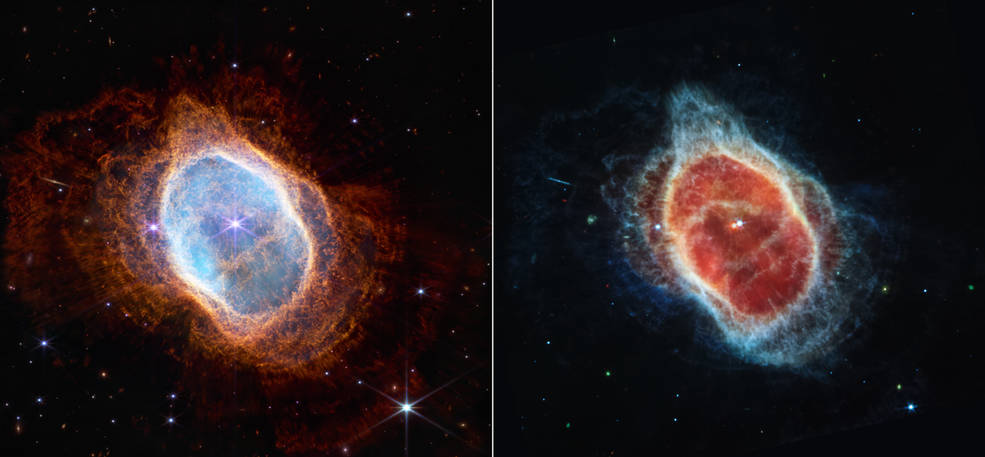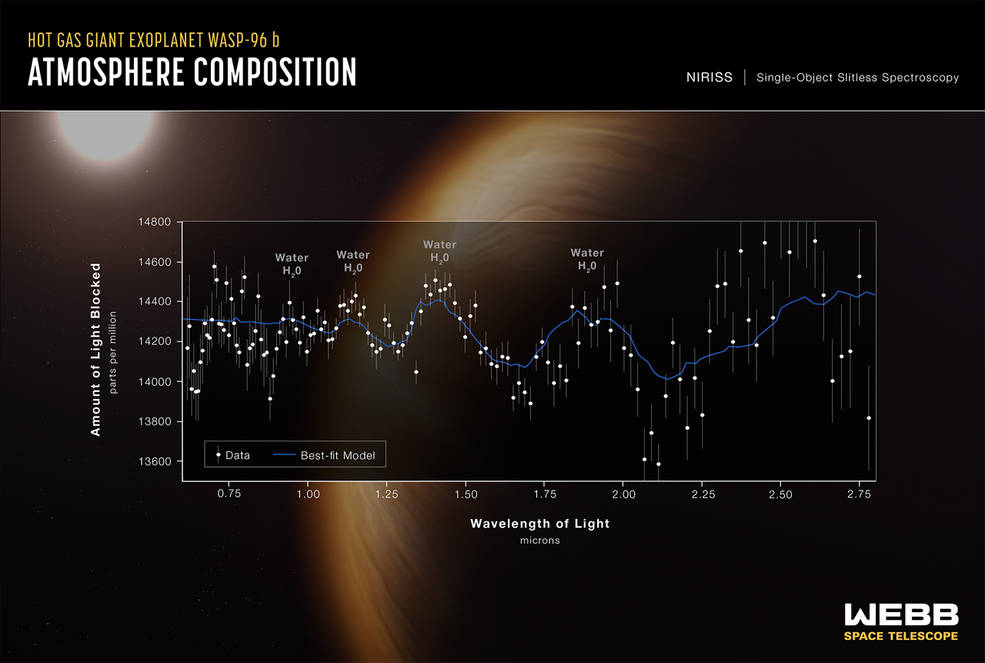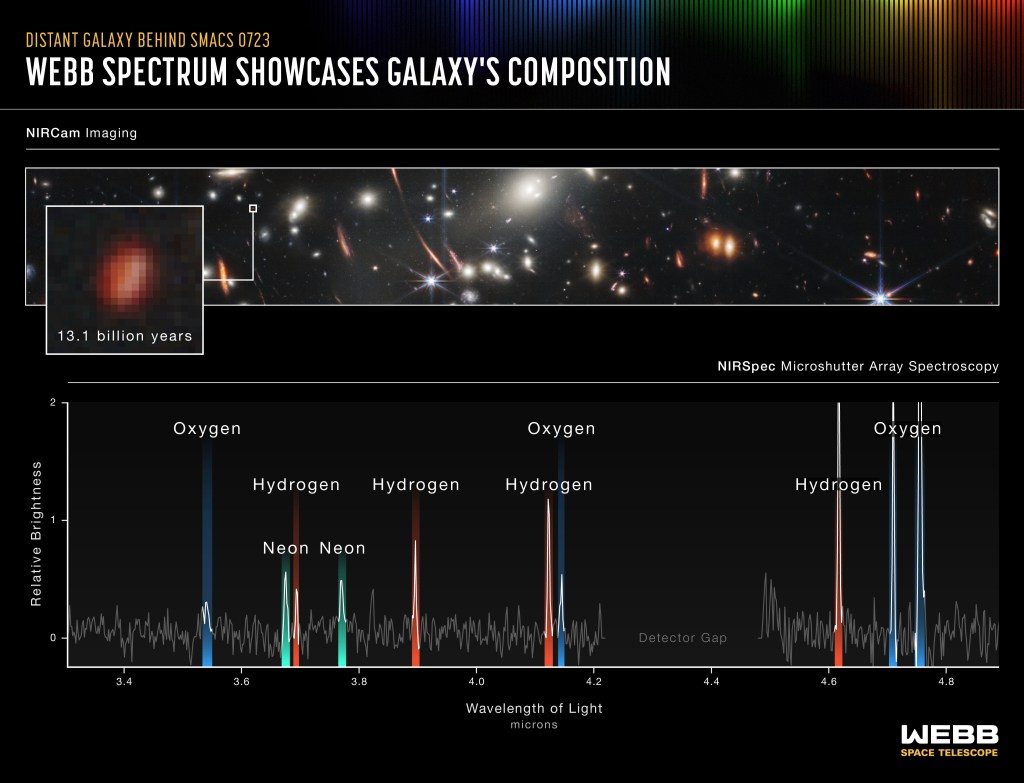I once again want to talk about the James Webb Space Telescope. Why? Well strap yourself in, because I’ve been geeking out. Back in January, I gushed over the launch of the JWST, while trying very poorly to explain how important and magnificent the JWST will be to humanity.
The JWST’s main function is to capture and see images in infrared. This is because infrared wavelengths are longer than visible light that we can see; thus making it invisible to us. By allowing the JWST to see in infrared, the telescope will be able to detect and see different cosmic objects, that are too far away for us to see with visible light.
This is a great time to mention that JWST’s first images were released recently, and they did not disappoint. I’m swiping right here. The JWST images are more gorgeous, than you can shake a stick at, on your best stick shaking day.
You may have already seen these images, but please just humour me. The truth is, I just want to stare at them. As sad as it is, these images are bringing me a lot of joygasms. WTF?! This is awesome!
With the descriptions of the images, I’ve tried to give a brief explanation of them. Can’t promise the explanations are good though!
One thing quick thing we need to sort before we start: what is a light-year? It sounds like it could be a measurement of time, but it’s not; it’s about distance. A light-year is the distance light can travel in a vacuum, within a single year. Light travels at 299,792,458 metres per second, (you can round it up to 300,000,000 m/s) so a light-year is 9.46 trillion kilometres (9.46×1012 km).
To put this in perspective, the distance between the Sun and the Earth is around 150,000,000 km. The light travelling from the Sun towards Earth is travelling at the speed of light, which is 300,000,000 m/s or 300,000 km/s. This means the distance from the Sun to the Earth, is just over 8 light-minutes.
Earth’s second closest star, Proxima Centauri, is 4.2 light-years away. Space is big.
SMACS 0723 aka Webb’s First Deep Field

To start the ball rolling, this image; just like the Hubble Deep Field photo, is greater than the sum of all of its parts. This is a cluster of galaxies called SMACS J0723.3–7327, but SMAC 0723 works just as fine.
SMAC 0723 is over 4 billion light-years from Earth, and this image is remarkable for four reasons.
1.) From what I understand, every dot, blob, or smear of light in this image, is actually a galaxy, filled with millions of stars, and hundred of millions of exoplanets.
2.) The area of space in the image, is about the size of a grain of sand, where a person standing on Earth, held it out at arm’s length.
3.) Due to the huge size and combined mass of this galaxy cluster, it is distorting space-time. This allows light to be bent around it, thus it acts like a lens, so we can see distant galaxies at a greater magnification. This is known as gravitational lensing.
4.) The JWST has some pretty cool instruments on board. The NIRCam and NIRSpec, have helped to reveal information about one of the galaxies in the image. The analysis of the galaxy’s light, shows it to be red shifted and about 13.1 billion years old. The age of the universe is about 13.8 billions years old. We are looking at a galaxy that, quite possibly, was only created around 700 million years after the Big Bang. This is mind blowing.
Southern Ring Nebula

This Planetary Nebula is 2,000 light-years away. It’s not a planet, but rather a collection of gas and dust, blown away from a Red Giant star as it died. With the image on the right, do you see a small white dot in the centre? That’s the White Dwarf star, and that’s what remains from the Red Giant’s death. For me, that looks like a hot mess. It’s gorgeous.
Stephan’s Quintet

This image is quite literally, out of this galaxy. This is Stephan’s Quintet, which is located around 300 million light-years away. Named after Édouard Stephan, the astronomer that discovered it, this is a galaxy group.
The image consists of four different galaxies; NGC 7320, NGC 7319, NGC 7318, and NGC 731. NGC 7318 is actually two galaxies that are colliding into each other. Which by the way, is exactly what will happen to our Milky Way Galaxy, in about 4.5 billion years, when we collide into the Andromeda Galaxy.
It also pays to understand, there are thousands of other galaxies in the background. You are not entertained?!
Carina Nebula

This is part of the Carina Nebula, that’s called the Cosmic Cliffs. It is near 8,500 light-years away from Earth and is filled with gas and dust. The Carina Nebula is what you would call a stellar nursery. This means it’s a region of space where stars are born, because of the vast amounts of gas and dust that are pulled into it. Once again, another gorgeous image.
Atmosphere Composition of WASP-96 b

Spectrum of a Galaxy’s Composition

These two compositions of an exoplanet’s atmosphere, and of a galaxy’s spectrum, reveals two major things: water and oxygen are more common in the universe, than we first thought. The implications to this data, could already change the way we understand and view the universe.
These images from the JWST are some of the first to be released, with many years of images to come. This telescope is going to create new fields of science, for generations of people to study and learn from. It really is going to change the world. Believe the hype about the JWST.
It cost $10 billion to create, which is a hefty price tag. However what we are going to learn from it, is going to be invaluable and priceless to life on our planet, but maybe, just maybe, life out there as well.
Thank you for reading Some Geek Told Me. It keeps me inside and in front of a computer, where my wife can keep an eye on me. Marriage is awesome. Stay away from Sour Cream and Chives, walk your dog, and I’ll see you next week.

You must be logged in to post a comment.